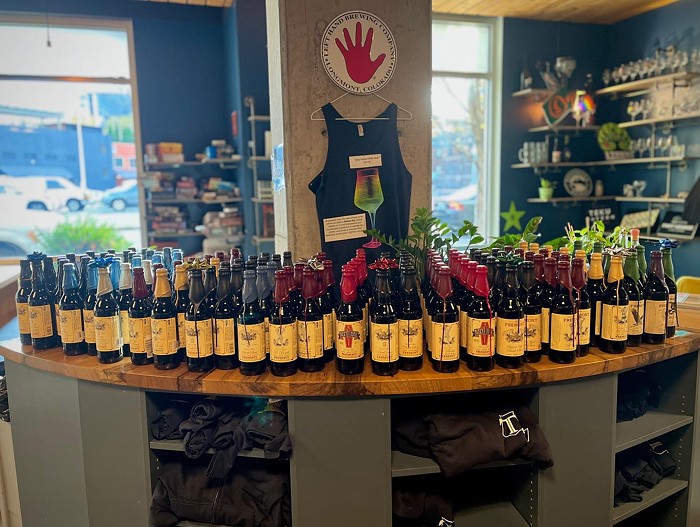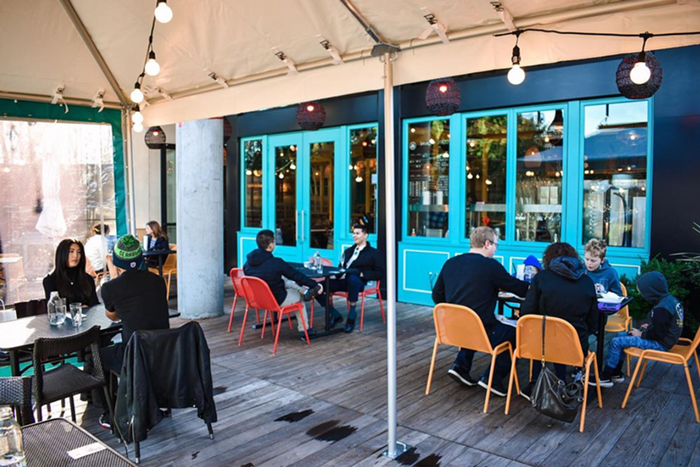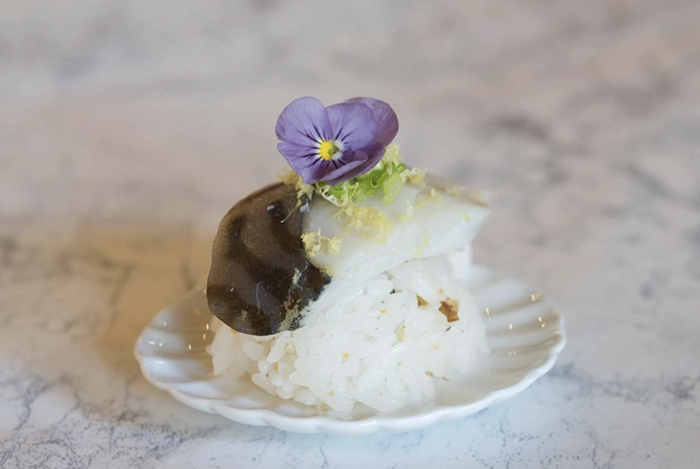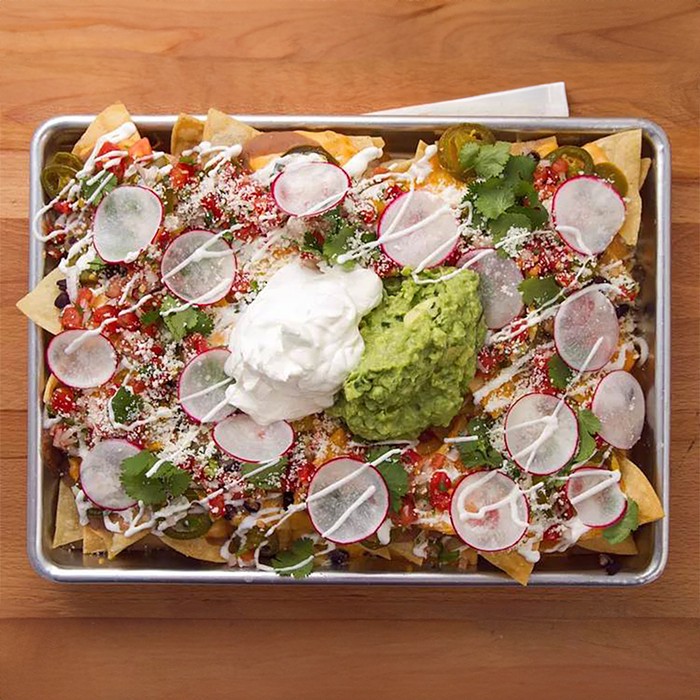Vegetarians, get ready to get mad: Lecosho is all about the meat. The meat has a face, and it's right on the sandwich board outside the restaurant: The logo is a drawing of a pig, and not a very cute one, with a humpback of extra porkiness. "Lecosho" is the Salish word for pig.
At a time when Michael Pollan is dictating that we "Eat food. Not too much. Mostly plants," and even the Dionysian Mario Batali is promoting Meatless Mondays, Matt Janke's new venture feels a little retro, located firmly back in the artisan- carnivorous camp. Seattle knows Janke from Matt's in the Market, where he cooked on two propane burners in the tiny original space; he eventually departed, leaving behind his first name. At Lecosho, head chef Mike Easton carries out Janke's vision—meat, strong flavors, more meat—in an open kitchen in the corner of the room.
The place is lit mostly by candle power, with two walls of windows looking now, in the dead of winter, out onto the darkened condominium canyon of Harbor Steps. If it feels urban in a '90s way—exposed ductwork painted black, a view of a Tully's and a neon "YOGA" sign—Lecosho is mercifully free of mismatched chairs and other affectations. The darkness and cushy banquettes give a clubby feeling, one of complicity; the room feels right for a date with a big piece of meat.
There's a compulsory pasta and some fish here and there, but the menu is laden with house-made sausage, rillettes, porchetta. And while portions are prodigious, the results, several months in, can be dodgy. At Lecosho, the idea often seems to be that more is better, particularly when it comes to the pungent or the saline. The Bibb salad was blanketed with bacon, blue cheese, and toasted onion ranch—the poor lettuce succumbed under the salty, smoky assault (augmented by salty, smoky roasted roma tomatoes, too). The dressing recalled the extreme assertiveness of Lipton Onion Soup Mix; the salad was as meaty as a salad without actual steak on top can be. (The other salad, called "green," has, lest a moment go by without protein, a soft-boiled egg on top.)
But if lightness is what you're after, you don't eat at the sign of the pig. So, to the meat. A starter of in-house sausage ($9), Alsace-style, was finely ground and very subtly seasoned; its traditional foil of pickled cabbage was braised here, ending up bitter rather than sour, with whole grains of mustard much apparent. The sausage got eaten all up, the cabbage mostly left behind. A duck leg confit ($12) was thoroughly imbued with salt, and it came in an odd configuration—in a bowl with lentils at the bottom, then a couple thickish rounds of potatoes fried on one side, then the duck and a small pile of peppery greens. A sweet-and-sour pomegranate balsamic was dispersed over the top in such a way that you only tasted it, urgently, in one or two bites; the potatoes in the middle were a strange, unnecessary layer of starch. While neither the sausage nor the duck were bad, they both made you wonder what, exactly, the kitchen was thinking. Meanwhile, an appetizer of grilled octopus with chickpeas ($9) was a fine version, but exactly what you'd expect.
From the entrée side of the menu, a grilled lamb porterhouse ($25), served with a couple small loaves of semolina gnocchi and a modicum of rapini, was sufficiently sized for at least a party of two. (Mr. Pollan and other proponents of carnivorous parsimony would not be pleased, to say the least.) The meat was beautifully cooked medium-rare; its stacked presentation looked pretty, but required speedy disassembly to keep lamb grease and juices from inundating the gnocchi. A Carlton Farms pork chop ($19) was likewise giant-sized, a couple inches thick, its vast surface area mapped by grill cross-hatching. It had been house-brined until salty-sour, cooked to just overdone, then exacerbated with a vinegary agrodolce on top. Its potato-parsnip puree was, well, salty. The porchetta ($17) did as porchetta does; this is not a dish to be ordered lightly. If you've never gone there, it involves inches and inches of pig fat—the kind of extreme meat-eating that should probably be reserved for the hardest-working Italian peasants and maybe Eskimos, if they still exist. The bed of white beans that the porchetta rested lardily on contained both mushy, overdone beans and hard, undercooked ones.
No one ordered the lonely tagliatelle—house-made, farro, with wild mushrooms ($15)—but the fish entrée reconfirmed the kitchen's investment in salt. A smallish, single mackerel ($19) came with puttanesca: salty, fish-oily fish with a salty, olive-oily sauce. A couple triangles of polenta functioned as unusually welcome islands of plainness. It was rustic, it was all right, but the one note was hit unremittingly; I am thirsty just thinking about it.
Desserts are not a focus at Lecosho, as they are not made out of meat; only three were on offer in recent weeks. In the end, a couple of them—a poached pear and gelato with shortbread cookies—relied, surprisingly but still too heavily, on pepper. ![]()



















